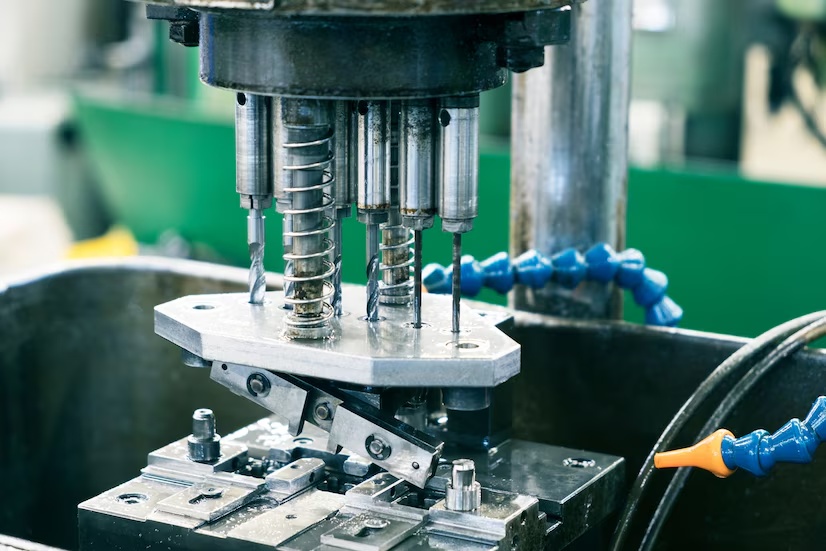Injection molding is a widely used manufacturing process for creating precise plastic parts in high volumes. It’s responsible for the creation of countless everyday items, from bottle caps to car parts and even complex medical devices. But how exactly does it work? Let’s delve into the world of injection molding and explore its steps, materials, and applications.
The Injection Molding Process: A Step-by-Step Look
Injection molding involves a well-defined sequence that transforms plastic pellets into finished products. Here’s a breakdown of the key stages:
Clamping: The mold, a crucial component containing the desired part’s cavity, is firmly closed by the injection molding machine. This ensures the molten plastic won’t escape during injection.
Injection: Plastic pellets, fed into a heated barrel, are melted and mixed by a rotating screw. Once molten, the plastic is injected under high pressure into the mold cavity through a sprue (the main channel) and runners (smaller channels leading to individual cavities).
Dwelling: In Injection molding China, molten plastic needs time to solidify within the mold cavity. This dwell time allows the plastic to pack out the cavity completely and achieve the desired shape.
Cooling: Cooling channels circulate a coolant (water or oil) within the mold, rapidly solidifying the plastic. This stage is critical for maintaining part-dimensional accuracy.
Mold Opening: Once the China die casting plastic cools and hardens, the mold opens, allowing access to the molded part.
Ejection: Ejector pins built into the mold push the finished part out. The part may then require trimming of excess plastic from the sprue and runners.
Repeat: The mold closes again, and the cycle restarts, enabling continuous production of identical parts.
Materials Used in Injection Molding
The most common materials used in injection molding are thermoplastics and thermosets:
Thermoplastics: These plastics can be repeatedly melted and solidified without changing their chemical structure. Examples include polyethylene (PE), polypropylene (PP), polystyrene (PS), and ABS (acrylonitrile butadiene styrene). Their versatility makes them suitable for a wide range of applications.
Thermosets: Unlike thermoplastics, thermosets undergo a permanent chemical change during the molding process, forming a rigid structure that cannot be melted again. Common thermosets include epoxy, polyurethane, and silicone. They offer superior heat resistance and chemical stability for specific applications.
Applications of Injection Molding
Injection molding’s ability to produce complex parts efficiently and precisely makes it a favorite for various industries. Here are some examples of its widespread use:
Consumer Products: Countless everyday items, such as toys, bottle caps, packaging containers, appliance parts, and electronic housings, are mass-produced using injection molding.
Automotive Industry: From car dashboards and bumpers to intricate interior components and even some engine parts, injection molding plays a vital role in vehicle manufacturing.
Medical Devices: Syringes, medical equipment housings, and even some prosthetic components can be produced using injection molding due to the process’s ability to maintain sterile and precise part geometries.
Aerospace Industry: Lightweight and high-strength plastic parts for aircraft interiors and other non-critical components are often injection molded.
Advantages of Injection Molding
Injection molding excels at producing large quantities of identical parts quickly and efficiently, making it ideal for mass production.
Design Flexibility: Molds can be designed to create complex shapes with intricate details, offering a high degree of design freedom.
Tight Tolerances: Injection molding allows for precise control over part dimensions, resulting in consistent and high-quality products.
Material Versatility: A wide range of thermoplastics and thermosets can be used, enabling the selection of materials with properties best suited for the application.
Cost-Effectiveness: For high-volume production, injection molding becomes a cost-efficient solution due to the speed and minimal material waste.
In Conclusion
Injection molding is a cornerstone of modern manufacturing, enabling the creation of countless plastic parts with precision and efficiency. From the ubiquitous water bottle cap to complex medical devices, injection molding shapes our world in numerous ways.
Read Also:
- The Role of Artificial Intelligence in Drug Discovery
- Escaping the Ephemeral: Disabling Vanish Mode on Instagram
- Unleashing Engagement: How to Make Your Facebook Posts Highly Shareable

